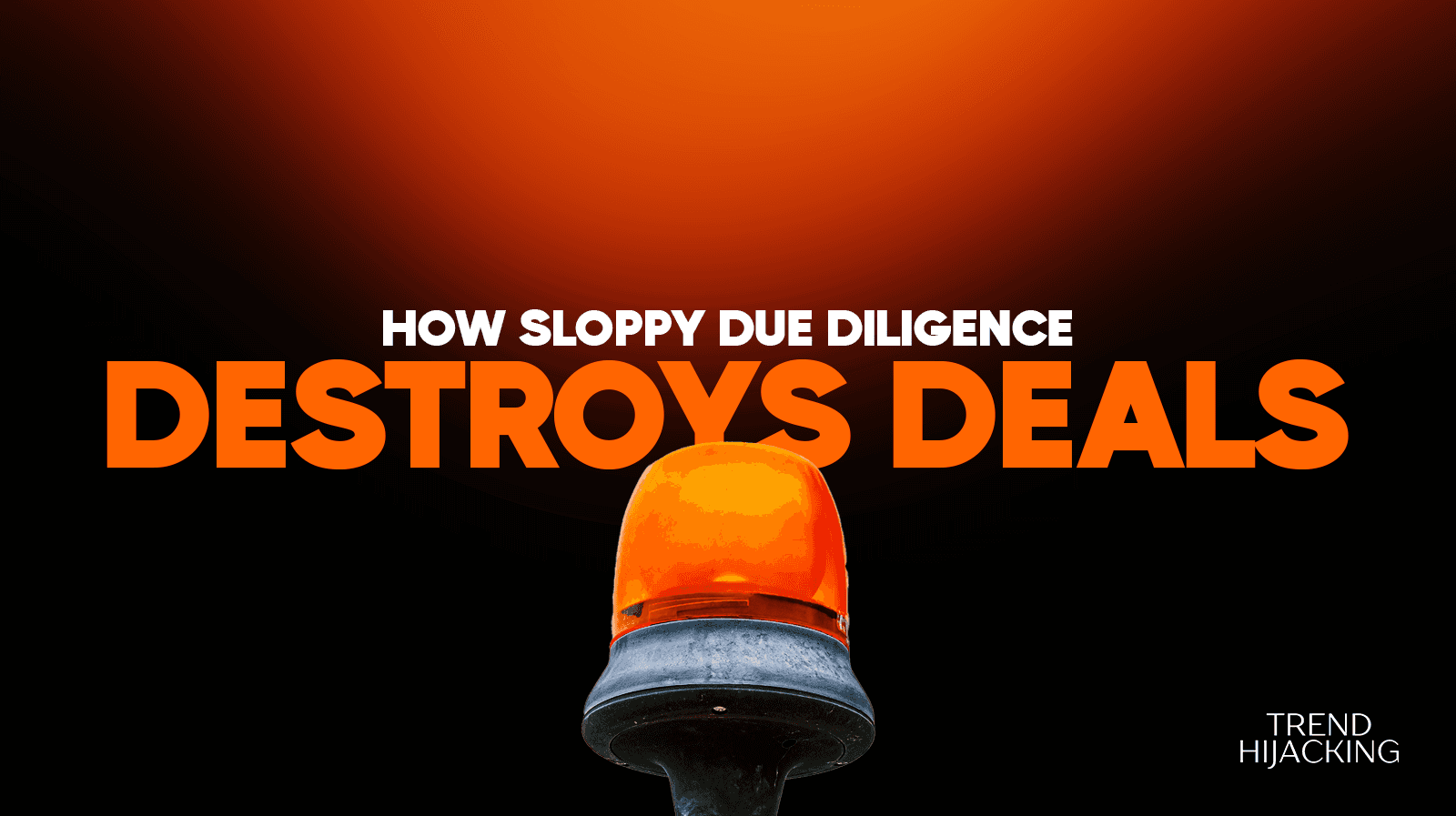8 Trends Shaping E-commerce Business Acquisitions in 2026
1. AI-Driven Valuations Are Becoming The Norm

Five years ago, valuing an e-commerce brand usually meant taking its trailing 12-month SDE (Seller’s Discretionary Earnings) and applying a rough multiple based on market feel.
Now, AI-powered valuation tools are changing the game!
These systems pull from thousands of completed online business sales, live traffic data, ad account performance, seasonality patterns, and even macro trends in the niche.
Instead of just “3x SDE because that’s what’s typical,” you get a data-backed value range with adjustments for:
Seasonal spikes or dips
Customer lifetime value
Ad spend efficiency
Platform risk
For buyers, this is a huge WIN. You get more transparency and less “gut feel” from brokers inflating numbers.
And for sellers? Well, it means you can defend a higher price if the data shows strong fundamentals.
Pro Tip: When a seller presents you with a valuation, ask which data sources were used and whether the analysis incorporated live operational metrics, not just historic P&L.
Related: 5 Ways AI Will Transform Acquisition Entrepreneurship Forever
We Help You Buy / Build, Manage and Scale E-commerce Brands for an EXIT
E-commerce Simplified for Busy Individuals – We handle the buying, building, and scaling, so you can focus on what matters.
Growth-Focused Strategies – From sourcing to marketing, we drive growth and prepare you for a profitable exit.
Expertly Managed Exits – We build a high-value brand designed for a Lucrative exit.
2. Multiples Are Stabilizing After Pandemic Swings

From 2020 to 2022 (i.e., during the pandemic), e-commerce multiples surged as online shopping demand skyrocketed.
Then came 2023, which brought a sharp correction… ad costs climbed, pandemic growth tailed off, and many FBA aggregators stopped overpaying.
Now in 2025, multiples seem to have leveled into predictable ranges as follows:
Strong, loyal-customer brands: 3–4x SDE
High-growth, defensible niches: 4–5x SDE
Commodity-style, low-margin stores: 2–2.5x SDE
Buyers today focus more on repeat purchase rates, owned audience quality (email/SMS), and organic traffic than on raw top-line growth.
Pro Tip: Based on our 3+ years in e-commerce business acquisitions, we advise you against chasing a high multiple.
Why? The brand “could” grow. Price based on what it’s proven to do profitably.
Note the words "could" and "proven."
3. Buyers Want Diversified Traffic Sources

The days when a single ad platform could scale a store to $10M in sales are over.
At least for the underdog.
Rising costs, algorithm unpredictability, and privacy changes have made channel diversification a key value driver when looking for an established e-commerce business to buy.
Brands commanding premium multiples often have the following key characteristics:
30–50% of sales from organic or repeat customers
An email/SMS list that consistently drives revenue
A healthy blend of paid, organic, social, and partner traffic
Communities or influencers generating unpaid attention
If 90% of revenue of an online store is tied to Facebook ads, buyers discount heavily because one policy change can crater performance overnight.
Pro Tip: During diligence, make sure you map the revenue of a store by channel for at least 12 months and stress-test “what if” one source drops by 30%.
4. Subscription-Based Models Are in High Demand

Predictability is gold in acquisitions!
That’s why subscription-based e-commerce businesses — think curated boxes, consumables, or membership clubs — are selling faster and often at higher multiples.
Recurring revenue reduces the volatility that scares lenders and investors.
It also supports higher lifetime value, which can justify bigger customer acquisition spends.
Smart e-commerce business buyers know that a store with 40%+ of revenue locked in through subscriptions has a built-in cushion against seasonal dips or ad platform drama.
Pro Tip: If you’re considering buying an e-commerce brand without a subscription offer, run the math on adding one post-acquisition.
This simple change can meaningfully increase your enterprise value.
5. Sustainability and Ethical Sourcing Are Adding Value

Consumers are voting with their wallets—and buyers are watching.
E-commerce businesses with verifiable eco-friendly practices, ethical sourcing, and transparent supply chains are attracting more interest.
This isn’t just a “feel-good” factor. Regulatory pressure around packaging, labor, and carbon footprint is increasing.
And this means that owning a brand that’s ahead of the curve reduces future compliance risk.
This is especially true for:
Health & wellness
Beauty & personal care
Apparel and accessories
Buyers see this as a way to future-proof against changing regulations and to appeal to younger audiences.
Pro Tip: During diligence, request supplier audits, sustainability certifications, and packaging details. These can directly support a stronger exit multiple down the road.
Related: 10 Most Profitable E-commerce Niches For Acquisition In 2025
We Help You Buy / Build, Manage and Scale E-commerce Brands for an EXIT
E-commerce Simplified for Busy Individuals – We handle the buying, building, and scaling, so you can focus on what matters.
Growth-Focused Strategies – From sourcing to marketing, we drive growth and prepare you for a profitable exit.
Expertly Managed Exits – We build a high-value brand designed for a Lucrative exit.
6. Due Diligence Is More Data-Heavy Than Ever

Gone are the days when you could buy an online store after a quick weekend glance at Google Analytics.
Today’s diligence is deep and data-rich.
This is crucial in making sure the numbers hold up and there are no hidden problems with the business you’re about to acquire.
Ideally, you should expect to pull and review the following:
Raw ad platform data (ROAS, MER, spend trends)
Inventory and fulfillment reports
Supplier contracts with pricing terms
Email/SMS performance metrics
Refund rates and chargeback data
Customer review sentiment
This is partly due to AI tools making it easier to spot red flags—and partly because buyers have been burned in the past by misleading claims.
But AI should be only your helper, not a replacement for human checks.
Use it to find likely problems fast, then dig into the raw data.
Pro Tip: Always tie ad account spend and revenue data back to bank or processor statements to catch “ad credit” distortions.
7. International Buyers Are Stepping Up

Cross-border acquisitions are rising thanks to better payment rails, currency shifts, and the appeal of the US, UK, and EU consumer markets.
For example, a stronger euro or pound against the dollar makes US assets more affordable for foreign buyers.
This means two things:
Sellers now have a larger buyer pool
Buyers may face more competition for attractive assets
This trend is especially notable in e-commerce niches with easy international shipping or digital deliverables.
Pro tip: If you’re competing with overseas buyers, emphasize your ability to operate locally without customs delays, cultural missteps, or compliance risk.
8. Financing Options Are More Flexible

In 2025 and beyond, deal financing no longer revolves around “cash or nothing.”
Creative structures are giving smaller buyers access to acquisitions that used to be private equity territory.
Common structures include:
Seller financing: Pay part of the price over time, often interest-bearing
Earn-outs: Additional payments if performance targets are met
Equity swaps: Seller retains a minority stake, keeping skin in the game
Needless to mention, this is giving smaller buyers a shot at deals that used to only be available to private equity firms.
Pro Tip: Use performance-based earn-outs tied to gross profit (not revenue) to protect against sellers juicing sales at the cost of margin.
How To Win As An E-commerce Business Buyer:

Here’s some additional helpful tips to help you find, underwrite, and close e-commerce deals that hold up:
1. Define your buy box clearly: Know your target size, niche, margin profile, and acceptable risk.
2. Screen for durability: Avoid one-channel dependencies and short-term spikes.
3. Underwrite conservatively: Stress-test margins for fee increases and ad cost rises.
4. Negotiate smart: Structure deals to share risk with the seller.
5. Have your 90-day plan ready: Sellers respect buyers with a post-close growth roadmap.
Final Word
Buying an e-commerce business today is more mature, data-driven, and competitive than ever. When looking to acquire an existing brand, your best bet is to prepare early, keep your numbers clean, and focus on long-term brand value.
If you want to skip the guesswork when buying an e-commerce brand, our team can help you through our Smart Acquisition program.
We help you find profitable brands in 60 days, handle the due diligence, and make sure you’re getting the real deal — so you can make a smart, confident investment.
A Done-For-You E-commerce Business
Discover how we Build, Launch, and Scale a 6-figure/month Business for You
Learn more
The 6-Step Blueprint to E-Commerce Acquisition
See how we Acquire, Convert, and Scale with Real Case Studies to Prove It.





















